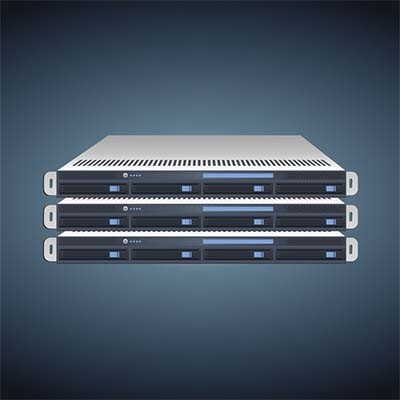Small business owners need to find creative ways to build a strong, productive operation. The best way to create the kind of productivity required to successfully grow a business is to ensure that everything works in concert. Today, we will look at a four technologies that can go a long way toward helping any small business grow their organizational productivity.
Computerware Blog
Technology has become so ingrained in society and the workplace that it can be difficult, borderline impossible, to consider a life without it. Hours on end are spent in front of computer screens during the workday, but even after hours in the comfort of your own home, you might notice that you have a hard time putting down your devices.
Science fiction is filled with incredible technology, especially in terms of how the characters communicate. This is especially true in the epic space opera Star Wars. Fortunately for viewers like you and me, some of the communication devices and technologies used a long time ago, in a galaxy far, far away, may not be so far off.
Have you ever heard of the term “bias?” It has a negative connotation to it, but it’s not necessarily a bad thing. A bias can predispose you to a skewed consideration or thought when met with what is known to be a seemingly neutral stimuli. In some cases, they can cause more harm than good, which is why it’s a good thing to take another look at how you approach certain situations. Researchers have discovered several trends about why we hold certain biases, as well as how we can overcome them.
Over time, we’ve seen technology be developed into smaller and smaller sizes. One of the most notable examples of this is the computer. Computers used to be so large that they would take up the whole room, but nowadays, thanks to the developments in technology manufacturing, they take up a fraction of the space that they did not so long ago. What’s even more amazing is that this development has simultaneously increased performance while making technology take up a considerably smaller amount of space.
Virtualization is a topic that a lot of people might hear about frequently, but not necessarily understand. It has a lot of details to keep in mind, but the concepts can be remembered easier by simplifying these details. We’ll take a closer look at some of the finer details of virtualization and what it means for your business’ infrastructure.
It’s important that your business get as much value out of your technology as possible, but this is often easier said than done. There isn’t an easy answer to how you can get the most out of your technology. Even if you implement a brand-new solution, who’s to say that you don’t actually need it or use it? Cutting costs is more important now than it has ever been, and for small businesses hoping to save on IT support, there’s no time like the present to secure your business’s future.
Your signature has a lot of power, particularly in the business world. Because of this, it’s curious to see how so many companies are moving over to the more digital alternative. In order to fully take advantage of digital signatures for your organization, you need comprehensive security measures that can reinforce the authenticity of your signatures.
In 2018 there are certain technologies most businesses have begun to embrace. Cloud computing, high-end network security, collaboration technologies, and some others have begun to be utilized by businesses, large and small, to build a more productive enterprise. Apart from these technologies, there are a few that every business person should know, if only to understand what is possible; and what is on the horizon for their company.
Merry Christmas! We know that for the small business owner, even on Christmas day, business doesn’t completely stop. Sure you can spend time with loved ones and take a couple days off from the grind, but tomorrow is another day. According to one study, people are gifting technology more than ever, so much so that new traditions that include technology, are replacing the once-held notion that technology was a distraction.
If you spend more than ten minutes with anyone from the technology industry, you may notice that they have a rather colorful vocabulary. It’s not too vulgar or anything, but it is chock-full of buzzwords that you may not fully understand. Here are some of the most frequently used words in the IT industry.
With productivity being so important in the modern business, it only makes sense that so much of the technology we have now--and will likely have in the future--is devoted to maximizing the amount of work that can be accomplished by one person in a given time. While not everything we will discuss is always relevant for the typical SMB, if your business continues to grow, more technologies will only become accessible over time. Here are a few technology tips to increase your organization’s productivity.
If we asked you what the most significant trend in today’s professional environment is, what would you say? For those who depend on technology to manage and maintain their operations, the cloud has allowed for some of the biggest and best advantages--so much that it’s perhaps one of the most prominent shifts that the world has ever seen.
How the Cloud Works
In essence, the cloud is a term that applies to any off-site computing done by your organization. It’s not far from the reality of the situation to suggest that cloud-based services work by using someone else’s computer to store and process applications and data.
The cloud provider rents their computing resources to you. Depending on their service model, you’ll receive services for a cost based on how much you store, how much power or bandwidth you need, or how many accounts must access it. The cloud provider needs to adhere to these guidelines if they want to keep you as a customer. Furthermore, safety and security are also required, as nobody wants to have their data stored in a place where it’s susceptible to theft. Finally, the cloud provider needs to be able to provide you the services at a rate that’s cheaper than if you were to find a way to accomplish the same thing on your own. This is a considerable amount of information to think about, especially with the other costs involved.
The most important features to think about are how much uptime and security are offered, as both are required by any organization. The problem is that achieving the required results on your own is difficult for an organization with a limited IT budget, making outsourcing to a cloud provider quite ideal. It’s a way to manage risk; you won’t be burdened by unexpected costs in the event of trouble, as it’s the responsibility of the managed service provider and not your organization.
However, the cloud service provider needs to do much more than manage a single computer. Instead, it’s managing many hundreds or thousands of virtual computers stored in a data center, all of which need to be maintained. Since they are being stored in bulk, the cost per unit drops, but security becomes an even larger challenge. Meanwhile, the cloud provider is capable of investing in more expensive and top-shelf solutions that your business might not be able to afford on its own. The end result is enhanced security and capabilities alongside technology that allows organizations to keep up with major industry trends--without the hefty price tag.
This Isn’t the First Time
If all of this sounds familiar, it’s because this isn’t the first time that technology completely revolutionized the business environment. Back in the 1890s, before computers and cyber security were even pain points for organizations, business owners had to worry about how to power their site of operations with electricity. Factories used expensive on-site generators that could hardly be called efficient, and they were all but impossible to maintain without going out of your way to do so. Some employees needed to remain on-site just to ensure that operations didn’t stop due to a generator malfunction, simply because the organization couldn’t afford to allow productivity to halt, even for a few minutes.
This all changed when the Edison Power Company in Chicago found a better way of doing things. With the ability to provide reliable and clean electricity to factories at a more affordable rate, they were able to completely change the way organizations were run. The cost per unit became much cheaper, as the Edison Power Company found they could maintain their infrastructure by employing specialized technicians who focused on the upkeep of this equipment. 20 years later, you’d be hard-pressed to find an organization that didn’t utilize the power grid in some way.
How the Cloud is, More or Less, the Same Thing
Can you imagine producing the bulk of your organization's electricity in-house? While this might lead to humorous imaginary situations, like hamster wheels or treadmill desks, such a notion would be absolutely silly. The same thing can be said for the cloud and your organization's IT infrastructure. The fast-paced shift from on premise servers to cloud-based virtualization, along with the mobile device infestation, has made way for organizations to shed their traditional server and desktop infrastructure altogether in favor of a more streamlined virtual approach. With the cloud, your business will be able to implement solutions like email, document management, line-of-business apps, and so much more, all for a lower cost with enhanced security functionality.
In fact, some future-minded organizations have already begun taking advantage of this shift in ways previously unheard of. Instead of managing in-house servers and desktop workstations, these organizations host their infrastructure in the cloud, allowing for greater flexibility and energy saving costs. It’s just one way that the shift toward cloud computing is helping organizations achieve their maximum potential.
How will your business take advantage of the cloud? If you’re not sure, call us at (703) 821-8200. Computerware’s trusted technicians want to make sure that your business’s technology infrastructure doesn’t skip a beat.
Let’s say that you’re in the comfort of your own home working on a major project that needs to be completed before you turn in for the night. However, the moment you take out a tablet or laptop, your toddler runs up to you, curious about what you’re trying to do. This makes it rather difficult to get anything done, especially since most toddlers suffer from what’s known as the “mine” syndrome.
Despite what you might hear in the media, data breaches aren't the only IT-related issues that small businesses have to worry about. There are many other problems that you need to plan for, and they don’t all originate from hackers trying to steal your data. Let’s take a look at some of the common problems you might experience with your office technology.
BDR Issues
You don’t want to be stuck in a position where your business has to deal with data loss, and it’s even more frustrating if you haven’t prepared for such an event. However, small businesses may have smaller budgets, which limits how much they can invest into data recovery and backup systems. In many cases, they might just forego the protection offered by data backup and recovery in hopes that a disaster will never rear its ugly head. Doing this jeopardizes the future of your business and is an unnecessary risk, especially when BDR is so readily accessible from Computerware.
Waiting for Issues to Occur
Your business can learn a lot from the old adage, “If it ain’t broke, don’t fix it.” Although, business technology is a different situation entirely that demands a more careful approach. Taking proactive measures to keep issues from evolving into major problems is a viable IT strategy that can keep you from spending huge amounts of capital on replacement hardware, and we can make this simple by providing these services and more for a reasonable monthly fee.
Unknown Root Causes
Even small IT issues can be a symptom of larger underlying problems. In fact, these smaller problems might even be so plentiful that they shield the larger problem from being discovered in time to make a difference. A good indicator of when this happens is when the same small issues pop up and must be fixed repeatedly, as they may be caused by a larger problem. Resolving this should be a top priority, as fixing the same thing over and over again quickly becomes a waste of time.
Security Concerns
While there are countless ways for internal problems to complicate your organization’s security, you can’t dismiss the fact that security threats lurk just outside your business’s network over the Internet. Hackers create threats that wait for unsuspecting business owners and employees to make mistakes, like downloading the wrong file or clicking on the wrong link in a spam message. Small businesses like to assume that they aren’t at risk thanks to how low-profile they are compared to larger enterprises, but the fact remains that hackers often don’t target specific businesses. Instead, they just wait for someone to make a mistake, and then capitalize on that mistake. This is why it’s so important to keep your company protected from all kinds of threats.
Lack of Strategy or Application Compatibility
Chances are that you aren’t the only one in charge of making decisions in your business, so have you considered what happens when your thoughts clash with someone else’s… like your IT department? When this happens, you might run into more roadblocks than you’d prefer, which can lead to slower project implementation. Similarly, you want to ensure that all of your technology is compatible with the rest of your infrastructure, which is something that only a dedicated IT provider would know.
User Difficulties
While you want to get the most use out of your technology, you also need to take into account the user experience. After all, your employees are the ones who will be using the technology, and if it’s counterproductive, they won’t find much value in it. If your employees are using technology that doesn’t improve the way they work, they might suffer from decreased productivity and efficiency.
Even though security is a major issue for businesses, you should still consider all of the other potential problems you could run into while going about your business. Only by taking a proactive stance on resolving technology troubles can your business innovate and push beyond your perceived limitations. Computerware provides technical assistance to small businesses that want to jumpstart operations. To learn more, reach out to us at (703) 821-8200.
Teaching children a skill can be a difficult job if they’re not having any fun. Therefore, turning kids on to lucrative careers in technology can be challenging, especially since tasks like coding can seem rather dull compared to say, fighting fires and driving racecars. This is why educational apps and tools have been created to make learning about technology fun!
It’s clear that one of the best ways you can improve your organization’s operations is through investing in new IT solutions, but these expenses change from year-to-year. However, as years go by, the amount that your business invests in IT is sure to shift. Though this year saw a minor decrease in IT spending, Gartner predicts that next year will be another huge opportunity to invest in new technology and IT systems.
Specifically, Gartner predicts a 2.9 percent growth rate in IT expenditures during 2017. ComputerWorld reports this growth as part of a global IT spending of $3.49 trillion. Gartner also predicts that spending on devices will increase by 0.4 percent to an astounding $600 billion. Global software spending growth will exceed 7.2 percent to $357 billion, while IT service spending will increase by 4.8 percent to $943 billion.
This growth is attributed to businesses’ desires to grow and become authoritative figures in their communities and industries--or so says John-David Lovelock from Gartner. He states, “Leading organizations, as well as those that wish to lead, are spending on IT and nurturing their IT investments as the means to grow their business.”
One of the most noteworthy trends in these growing numbers comes from the fact that organizations are increasing their spending while cutting out unnecessary costs. These figures show that businesses want to eliminate unneeded expenses, but also to reinvest the saved revenue into new, more innovative technology solutions. In other words, organizations are attempting to invest their returns to improve operations, and it’s easier to do so than you would initially think.
In fact, this increase in IT spending can mean that businesses are more willing to invest in enterprise-level solutions that create more flexibility and scalability in the workplace, allowing for more growth. The right technology services have an uncanny knack for decreasing capital expenses and freeing up valuable time and resources for more important endeavors. One way that businesses are doing so is by outsourcing services like help desk support and email hosting to third parties in order to free up work hours and reduce their bottom line.
Computerware specializes in outsourced IT, and as such, we want you to know that spending more isn’t always the right answer to maximizing your technology’s ROI. Our proactive managed services seek to reduce capital costs for organizations that want to invest their budget dollars into more lucrative aspects of running a business. In fact, managed services are the ideal way to reduce costs while investing in your business’s future, so why not give them a shot?
For more information, reach out to Computerware at (703) 821-8200.
Like it or not, millennials will make up a large part of your workforce in the near future. In your own business, you may have noticed quite the difference in the way that millennials approach work compared to other members of your staff. One of the biggest differences that you might have noticed is that millennials have no problem job-hopping. According to a recent study, one of the biggest reasons why millennials leave a company is due to outdated technology.
The Internet is a great place to find information on a technology solution before going all-in on the purchase. Yet, sometimes you’ll purchase a hardware component that doesn’t quite meet your expectations. While it’s sometimes possible to go through the hassle of returning it, you can avoid this problem altogether by renting the technology rather than purchasing it immediately.
It’s a routine move for businesses to perform a “hardware refresh” and procure new technology. It’s certainly nice to get new technology, but what’s your plan for handling your old devices? Instead of just tossing it in the garbage, make sure to consider all of your options in order to properly handle your old equipment.
Priority 1: Your Old Data
First and foremost, you need to properly take care of your data. To be clear, this involves more than dragging and dropping your files into the Recycle Bin. When deleting files this way, it doesn’t actually remove the data from the hard drive, which means that your files can still be recovered. Instead, you’re going to want to wipe your old hard drive, a procedure that completely erases all data on the drive.
If you’re going to dispose of your old hard drive, you’ll actually want to physically destroy it. This can effectively be done by using a tool like a drill press, or a couple of swings with a good ol’ sledgehammer ought to do the trick. Once you toss your hard drive in the garbage, you can’t be certain where it will end up. As improbable as it sounds, there’s actually a chance that your old hard drive could end up in the hands of a trash-collecting hacker. Therefore, you shouldn’t throw away any data that has a chance of being recovered. Computerware can assist you with properly wiping and destroying your old hard drive.
Donate Your Old Technology to Charity
There are a lot of charitable organizations out there that would be happy to accept your old computer equipment. However, you’ll at least want to do them the courtesy of donating something that’s useful, instead of pawning off your technology problems onto them. For example, we recommend contacting the charity first to see if they even need your old equipment, instead of randomly showing up with a truckload of random computers.
One relatively inexpensive way to make sure that you’re donating quality-used equipment is to equip your old technology with a new hard drive before donating it. Given the fact that the average hard disk drive has a lifespan of five years, you don’t want to gift a computer that has a high chance of crashing. Plus, if you swap out the old hard drive for a new one, you’ll mitigate the risk of having your files recovered from the old drive and used for nefarious purposes.
Repurpose and Reuse Old Hardware
Your old computer may still yet have a use around the office by way of repurposing and reusing it. Consider these examples:
- Using an old PC for a print or fax server will alleviate network traffic (though it would require reconfigurations to be made).
- Keeping the computer on hand for spare parts.
- Keeping a working computer on hand as a spare workstation, just in case an operational PC runs into an issue and needs to be temporarily swapped out.
Don’t Forget About Recycling
If you must dispose of your old technology, it’s preferred that you do the responsible thing and recycle it. One reason for such a move is due to the toxic metals that make up electrical components. By simply chucking an old PC into the landfill, these chemicals will leak into the environment and cause problems. Recycling your old technology doesn’t have to be a burden. Computerware will happily do it for you.
When it comes to getting rid of your old technology, it’s best to have a plan. Our knowledgeable technicians are standing by to assist with any of your company’s technology needs. To learn more, reach out to Computerware at (703) 821-8200.




















